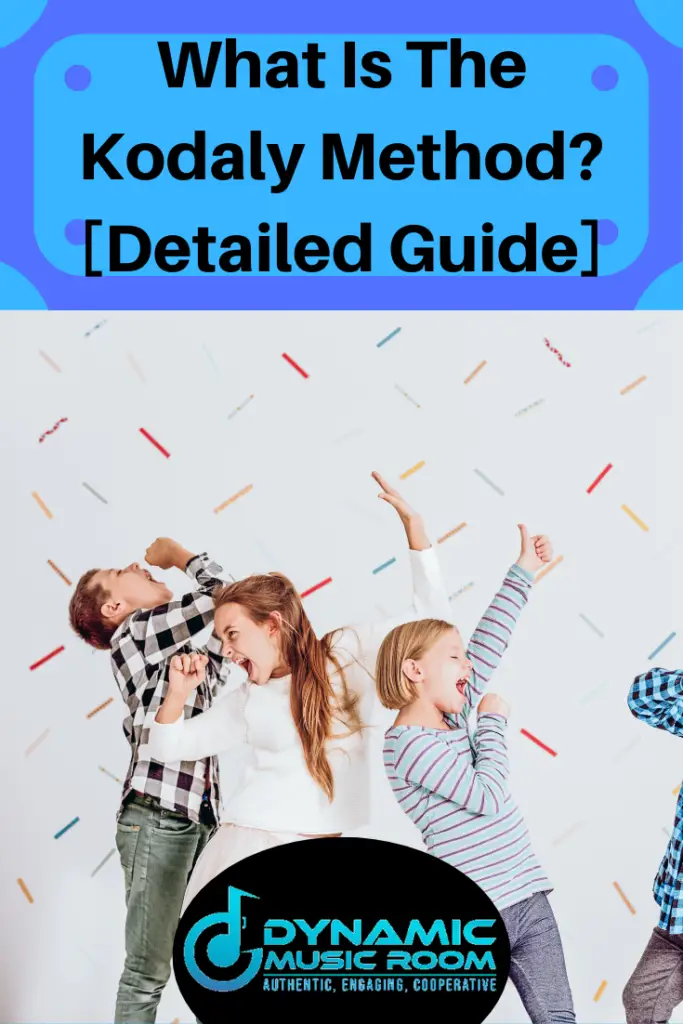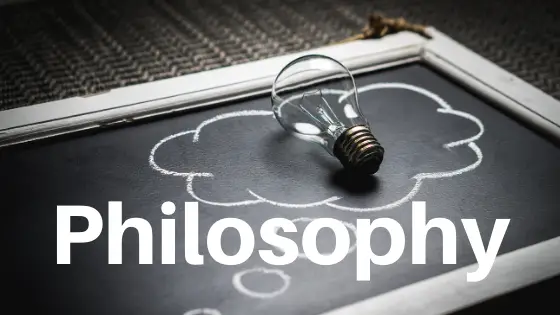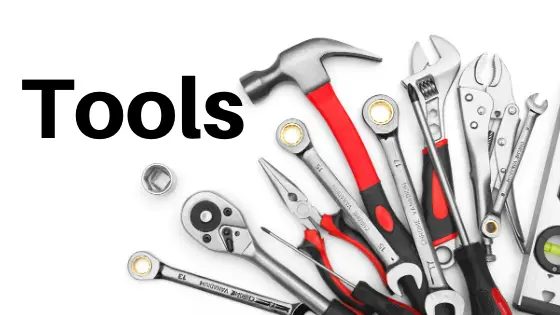Have you heard about the Kodaly method but you’re unsure what it is?
What is the Kodaly method?
The Kodaly method is a comprehensive way of teaching modeled after the way students learn. There is an emphasis on music for everyone, intentional sequencing of music literacy, use of quality folk song and classical materials, and creating a positive learning experience for all.
In this article, you’ll find information and resources on the Kodaly philosophy, Zoltan Kodaly’s life, and tools of the Kodaly trade.
Table of Contents
Kodaly In A Nutshell
The rest of this article goes into detail about Kodaly’s life and music education philosophy, but this section contains the essence of Kodaly boiled down into 5 important elements.
Music for everyone. Music is a birthright for every person and every person can learn music. But this is especially true of children.
Kids should be taught music from an early age. The greatest potential for musical learning comes from young children.
Music is a key subject which needs to be taught in schools.
Music teaching should be sequential with the child in mind. Intentional teaching keeps the students’ abilities in mind and introduces concepts in a well-thought sequence.
This sequence should be logical and model how students learn languages.
Music classes should be enjoyable. Learning in music can be hard work and tiring, but it should leave students and the teacher with positive feelings.
Singing first. The voice is the best vehicle by which to learn musical concepts and train the musician’s ear.
Use quality folk song material in the “mother-tongue.” Real music should be used as part of the teaching process, and the music should be drawn from the culture of your students.
For more on Kodaly in brief, check out the Organization of American Kodaly Educators.

A Little About The Life Of Zoltan Kodaly
Zoltan Kodaly was a Hungarian composer and educator who lived from the years 1882-1967.
During the early part of his composing career, he became frustrated with the low number of people attending concerts where his pieces were premiered and concerts for classical music in general.
In his efforts to find out why, he began to look at the quality of music education in schools. In 1925, he overheard students singing songs they learned at school, and Kodaly was surprised.
The standard of singing and musical quality was low, the music used wasn’t natural to the Hungarian people, and the schools were only intentionally teaching music in the secondary grades.
He wrote and advocated for better trained teachers, a well-rounded music curriculum, and more time for music in schools at all levels.
In 1935, Kodaly and Jeno Adam worked together to adapt music education for the middle and lower levels. This work birthed writings and philosophies that form the foundation for the Kodaly method.
In 1945, the Hungarian government decided to support his ideas and use them in schools. It was also at this time, the government wanted to support its students learning about their own native culture rather than the culture of the countries around (such as the Soviet Union and Germany).
Music schools were opened and very successful which led to hundreds of schools. Then half of the schools in Hungary were primary music schools by the 1960s.
The music education program’s popularity in Hungary was getting noticed outside of the country’s border. Kodaly first presented his ideas to the world in Vienna in 1958 followed by another in Budapest in 1964.
Music teachers from all over the world started to visit the Hungarian Kodaly music schools. Oakland, California hosted the first symposium on the Kodaly method and the International Kodaly Society was born in 1973.
Source: What Is Kodaly?

Kodaly Music Education Philosophy
The brief breakdown above gives you a quick look at the Kodaly philosophies, but in this section, we’ll go into more details on the philosophies and how they impact teaching.
For specific tools of the Kodaly method, look ahead to the Tools Of Kodaly section.
Music For Everyone
Kodaly believed music was for everyone and that all people should have a music education from an early age. In fact, one of his popular sayings was that music education should begin 9 months before the birth of the mother.
This basically means that a quality music program will reinforce itself over generations and that all ages can benefit from specific music teaching.
Singing First
Singing is the first and most effective way to learn and perform music. It’s with you wherever you go and is easily accessed by all.
Learning to love and have confidence in your own voice is key to appreciating music and enriching your life.
Singing is a powerful tool for personal expression, and it forces you to train your ear more than instruments do. When students succeed with their voices, the feeling of accomplishment and confidence is more impactful.
This isn’t to say Kodaly-inspired teaching doesn’t encourage instrumental playing. He was a big supporter of the recorder and Orff xylophones.
But singing should come before instruments. This allows your brain to develop aural understanding and then apply this understanding more effectively to instrumental playing.
Folk Music/Mother Tongue
Kodaly believed folk music is music of the people. This is the music that should be taught and used in the majority of your music teaching.
This gives students a deeper insight into their own cultures and those from around the world. Folk music is also often appropriate in length, musical content, and lyrical content for children.
The “mother tongue” refers to an emphasis on using music in the native language of the students. This may seem an odd place to add extra emphasis; isn’t this a given?
Keep in mind: in Hungary, students were learning the music of neighboring countries rather than their own heritage.
Read more about the importance of folk songs in education.
Quality Music
Another key element of the Kodaly philosophy is the use of good quality music in the classroom. Folk music and classical music used in classrooms should only be examples of “good” music.
There are three main problems to watch for in music classrooms when considering quality music.
Composed For Teaching – These are songs made up by music teachers just to reinforce a specific concept. While these songs may sound fun and be decent, folk music has stood the test of time because it touches something in our hearts.
Let’s use the good, real stuff.
Inauthentic Songs – Along the same lines, be on the lookout for songs which has basis in real folk music, but have been altered in inappropriate ways.
For example, the Canoe Song or My Paddle’s Keen and Bright was written based on authentic Native American music, but the song itself isn’t authentic.
Despite it having a beautiful melody and excellent literacy concepts, this song should be avoided because of its misrepresentation.
Popular Music – Yes, students love popular music and will buy into it quickly. But there isn’t a lot of substance to most of the songs.
There have been “popular songs” throughout all ages of history, but we can look back at the ones standing the test of time and point them out as quality.
We don’t have that luxury with songs that are more recent. It’s almost impossible to tell which ones are going to last. For this reason, most Kodaly-inspired teachers suggest leaving those alone where possible.
Well-trained Music Teachers
One of Kodaly’s main complaints about Hungary’s music programs were the poor training of the music teachers. Often, these teachers would have zero training at all.
It makes sense that well-trained musicians would make better music teachers.
This doesn’t mean you have to be a world-class musician to teach well (in fact, I would wager many of them wouldn’t), but as a music teacher you should have solid aural skills.
Well-trained in this case would also mean you have received special instruction and coaching in music pedagogy (how to teach).
This is the reason why Kodaly training include solfege, choir, and conducting as part of the program.
Building Well-rounded Musicians
Kodaly was also a big supporter of developing the whole child’s musical abilities. To this end, the music classroom needs to balance many types of instruction.
It’s a common myth that all Kodaly-inspired teachers introduce are literacy concepts. If this was the case, they wouldn’t be placing an emphasis on well-rounded musicianship.
Kodaly-inspired teaching reinforces many musical ideas and skills including:
- Sight singing
- Dictation
- Ear training
- Part work
- Singing
- Playing instruments
- Harmony
- Form
- Develop memory
- Improvisation
- Reading notation
- Composing
- Expressive movement
Positive Experiences
Last, but certainly not least, is the emphasis on positive musical experiences for the child. It’s believed that a music class should leave both the students and the teacher exhausted from the work but satisfied with the lessons learned and fun had.
To this end, a lesson needs to have alternating section of high fun/high activity with low activity/high learning.
Keeping the lessons moving helps students stay engaged. Using high learning sections of the lesson will make students feel accomplished.
Having high fun section will leave students with positive experiences. These experiences will reinforce the child’s love for music and keep them engaged in music making throughout their life.

Tools Of Kodaly
In this section, we’ll go over the common tools of the Kodaly method. These tools may not be specific to Kodaly, and they may not be used by every Kodaly-inspired teacher, but these are techniques you can expect to be used by most.
Moveable Do Solfege
One of the most common tools used by Kodaly-inspired teachers is moveable do solfege. This system has roots back hundreds of years.
Solfege is the assigning of syllables to pitches in a key. This helps students develop a better understanding of interval relationships and their music fluency.
Moveable do means that the tonic pitch in each key will always be do. The common syllables include (from the highest pitch to lowest):
- Do’
- Ti
- La
- Sol
- Fa
- Mi
- Re
- Do
Learn about how solfege works.
Curwen Hand Signs
Also known as solfege hand signs or Kodaly hand signs, these hand signs are a kinesthetic way to represent the solfege pitches from moveable do.
While the jury is out on the overall effectiveness of this tool, the fact remains that most music teachers use them in some capacity.
Hand signs and other moving representations of pitches can be used to reinforce all the skills of a well-rounded musician listed in the previous section.
Check out the purpose of solfege hand signs.
Rhythm Syllables
Another common tool of the Kodaly method is rhythm syllables. The method doesn’t specify exactly which syllables should be used, but the Kodaly rhythm syllables are the most common.
In the Kodaly syllables, rhythms are replaced with syllables helping students perform, read, and audiate (inner hear) the rhythms more effectively.
The common example of Kodaly rhythm syllables includes:
- Quarter note = ta
- Paired eighth notes = titi
- Half note = ta-ah or too
- 4 sixteenth notes = tiri tiri or tika tika
Read more about Kodaly Rhythm Syllables.
Concept Sequence
One of the hallmark tools of Kodaly-inspired teaching is the concept sequence. In this sequence (similar to a pacing guide), the musical concepts are laid out through all grade levels and months taught.
Some Kodaly-inspired teachers (myself included) nerd out on creating and designing concept plans to meet our students’ needs while balancing things like concerts.
But then again, why reinvent the wheel? There are hundreds of examples out there; just borrow from one of these.
Go look at one example published by the Kodaly Center at Holy Names University.
Prepare-Present-Practice
Prepare-present-practice (PPP) is essentially a form of unit planning by concept. In this format, the students are guided through a differential approach to developing concept knowledge.
PPP is used by many Kodaly-inspired teachers although use it with different names.
Here’s a (very) quick breakdown of the cycle:
Prepare – Students move, listen, and read from icons or pictures related to the targeted concept.
Present – Students are introduced to the concept in its traditional form (notation).
Practice – Students use the new knowledge in a variety of ways to deepen their skill with the concept.
Here is a (very) quick example of activities with the targeted concept, Quarter note vs. Paired eighth notes:
Prepare:
- Students echo teacher and walk for quarter notes and tiptoe for eighth notes
- Students perform rhythm patterns on drums while saying “walk” for quarter and “tiptoe” for eighths.
- Students read from pictures of one star for quarter and two smaller stars for eighth notes.
Present:
- Review everything learned briefly.
- Introduce the quarter notes and eighth notes instead of pictures.
- Say with rhythm syllables instead of words.
Practice: Use the notation and syllables to
- Dictate
- Read
- Compose
- Improvise
- Sing in parts
- Audiate
- Memorize
*This was very brief. Check out the following video for more information.
Creativity
An often-forgotten aspect of the Kodaly method is its emphasis on creativity. Mistakenly, most people assume the method with its detailed sequence and teaching tools limit creativity.
But this is NOT the case.
The systems in place develop a deep understanding of musical concepts which increase the students’ ability to create.
With the deeper knowledge comes the ability to compose and improvise within framework intentionally instead of randomly.
Cooperation
At the center of Kodaly was the desire to engage all children in life-long music making and appreciation. For this reason, the Kodaly method emphasizes interaction and music creation between the students.
This cooperation isn’t only fun, it also helps students learn better.
Getting students to work together is key to providing the best experiences possible.
Note: The Kodaly method doesn’t “own” any of these tools. In fact, you’ll find most major methods use many of these in one form or another.
Popular Kodaly Resources
There are a lot of Kodaly resources out there, and most of them are great. But it can be hard to sort through all there are and find the most useful ones.
Here are a few of the most popular ones and how you may want to use them.
Note: These resources are meant for those wanting a big-picture understanding of the Kodaly method. There are a lot of Kodaly resources out there that offer additional and/or specific information, but these aren’t in this section.
Some of these links are affiliate links through Amazon which means we earn a small commission when you buy them. However, I have used all of these resources and picked only quality ones to share.
The Kodaly Method I by Lois Choksy – This text was one of the first for Kodaly in America, and it remains as a pillar in the field.
This book is filled with resources and concrete explanations on how to implement Kodaly.
Kodaly Today by Houlahan and Tacka – When it comes to all-encompassing explanations, this book is king. Everything you could need to know about the planning and teaching of a Kodaly-inspired classroom is in here.
However, it’s a little tough to get through unless you have Kodaly training. If you want an easier place to start, check out their “Kodaly in the (insert grade) Classroom” series.
First We Sing! By Susan Brumfield – This book doesn’t have every song you’ll want to use, but it does have great and easily understood explanations of the finer points of the Kodaly method.
An American Methodology by Eisen and Robertson – If you’re looking for a blend of explanation, examples, and resources this book may be for you.
As a resource, you have to put lessons together a little yourself, but it gives you everything you need to do so easily.
Where Can You Get A Kodaly Method Certification?
In the U.S. and around the world, there are hundreds of trainings every year. Look at these links to find a program near you:
Check out What Is Kodaly Training? for more about what Kodaly training involves.
Conclusion
I hope you enjoyed learning a little about what the Kodaly method is. This method has been a favorite of music teachers for over 50 years because of its engaging, sequential, and differentiated approach.
Did you learn anything you didn’t know before? Let us know in the comments below.

